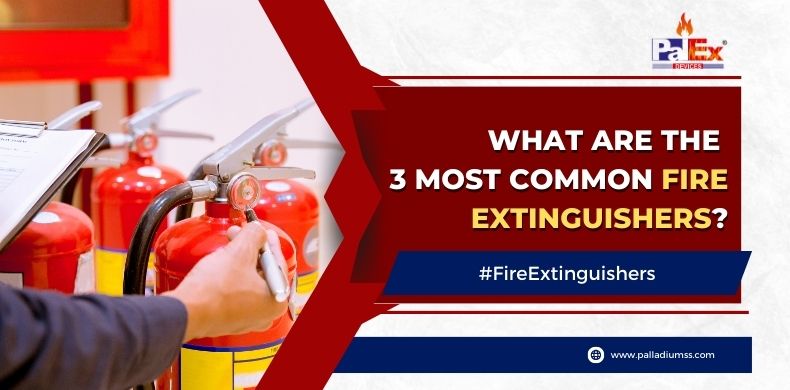Fires can happen anywhere – at home, in the office, in your car, etc. Having the right fire extinguisher on hand can help prevent a small fire from turning into a raging blaze. But with so many types of fire extinguishers available, how do you know which ones are the most common and versatile for home and office use? In this blog post, we’ll cover the 3 most common and useful fire extinguishers that everyone should know about.
1. Dry Chemical Extinguishers
Dry chemical extinguishers are by far the most common type you’ll find. They contain a powdery substance like sodium bicarbonate or potassium bicarbonate that smothers and breaks the chemical reaction of a fire. These extinguishers are labeled with a yellow triangle and generally given a type ABC rating, which means they can be used on common combustibles like wood, paper, plastics, fabrics etc. (Type A fire), flammable liquids like grease, gasoline, oil, etc. (Type B) and electrical fires (Type C).
A few squeezes of the handle spreads a fine mist of powder that knocks down flames and creates a barrier to suppress re-ignition. Dry chemical extinguishers come in a range of sizes from compact units designed for home kitchens to larger models mounted on walls in offices, schools, factories etc. They are inexpensive, low-maintenance and effective against over 90% of fires you’ll encounter. Make sure to get an ABC rated model – the minimum size recommended for home use is 2lbs but a 5lb or 10lb unit provides longer extinguishing capability.
2. CO2 Extinguishers
CO2 (carbon dioxide) extinguishers are immediately recognizable by their hard horn-shaped nozzles and red cylinders. Though not as widely used as dry chemical types, CO2 models are extremely common where special fire risks exist like commercial kitchens, laboratories, sensitive electrical equipment etc. The pressurized CO2 is expelled as a gas/snow that rapidly displaces oxygen and stops the combustion process.
These extinguishers are given a type BC rating for use on flammable liquids and electrical fires. The gas released is non-conductive, non-damaging and leaves no residue which makes it ideal for electronics and valuable equipment. CO2 models range from 2-20lbs for commercial use but 5-10lb home models are available. They generally have a shorter discharge range than dry chemical types. Note that CO2 extinguishers are ineffective against wood, paper, plastics and other common combustibles.
3. Water Extinguishers
Traditional hand-pump water extinguishers are tub-shaped metal cans filled with water and pressurized air. They are designed for Type A fires involving wood, paper, textiles etc. where a cooling water mist halts the fire. However, these extinguishers are no longer recommended for home use since the water can spread burning liquids like cooking grease. Water types also present an electrical hazard and must never be used on live wiring.
Modern water extinguishers replace the water agents with a foaming agent that is safe for Type A and Type B fires. These are labeled as “water mist” or “air pressurized water” models. Though not as widely available as dry chemical, foaming water types can effectively stop wood, paper, grease and oil fires. They provide rapid flame knockdown and leave a blanket of foam to prevent reflash. Water mist models are suitable for home use though dry chemical remains the superior all-purpose choice.
Also read : How Do I Know If My Fire Extinguisher Needs to Be Recharged?
Choosing the Right Fire Extinguisher
When selecting fire extinguishers for home or office, your first choice should be a multi-purpose ABC dry chemical model. These affordable extinguishers provide protection against over 90% of common fire scenarios with their ABC rating. They are suitable for fires involving wood, fabrics, plastics, grease, oil, gasoline and electrical equipment. Purchase the largest ABC dry chemical unit that fits your budget and space requirements.
For special risks like commercial kitchens and laboratories, supplement your dry chemical protection with BC rated CO2 extinguishers designed for cooking grease and chemical fires. Water mist units are also a good supplementary choice providing the fastest flame knockdown of all extinguishers. Avoid old fashioned water filled extinguishers which can dangerously spread liquid fires.
Wrapping up
Finally, make sure all family members and coworkers know the location and basic operation of your fire extinguishers. Quick access and proper use are key to successfully suppressing fires before they escalate beyond control. With the right preparation, you can stop small fires in their tracks and protect lives and property.



